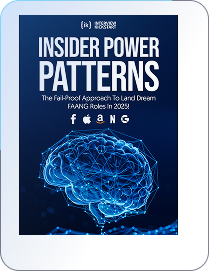Microservices are a key concept discussed in technical interviews for software engineers. Java Microservices interview questions are typically asked of experienced software engineers during coding and design interviews. In this article, we’ll look at frequently asked Java Microservices interview questions for fresher and experienced developers to help you ace your tech interview.
If you’re a software engineer, coding engineer, software developer, engineering manager, or tech lead preparing for tech interviews, check out our technical interview checklist, interview questions page, and salary negotiation e-book to get interview-ready!
Having trained over 9,000 software engineers, we know what it takes to crack the most challenging tech interviews. Since 2014, Interview Kickstart alums have landed lucrative offers from FAANG and Tier-1 tech companies, with an average salary hike of 49%. The highest-ever offer received by an IK alum is a whopping $933,000!
At IK, you get the unique opportunity to learn from expert instructors who are hiring managers and tech leads at Google, Facebook, Apple, and other top Silicon Valley tech companies.  Our reviews will tell you how we’ve shaped the careers of thousands of professionals aspiring to take their careers to new heights.
Want to nail your next tech interview? Sign up for our FREE Webinar.
Let’s look at some popular Java Microservices interview questions that frequently feature in technical interviews.
Here’s what we’ll cover:

In this section, we’ll look at the most frequently asked Java Microservices interview questions and answers that you can expect at your Java developer interview.
Some popular Java Microservices frameworks are:
Some main features of Microservices are:
Here are some Java 8 Interview Questions to crack the coding interview.
This is one of the most common Java Microservices interview questions asked in technical interviews.
Communication takes place in two fashions:
Synchronous Communication – Synchronous Communication can occur through HTTP, FeignClient, WebClient, and Ribbon, using the RestTemplate.
Asynchronous Communication – Asynchronous Communication occurs when the user doesn’t require an immediate response. This mode of communication can be achieved using Kafka, JMS Implementation, or RabbitMQ.
Contract testing is useful when multiple Microservices need to communicate with each other. It is mainly used to detect irregularities in application configuration and consumer workflow.
Actuators in Spring Boot are sub-projects used to provide Restful web services. Restful services are important to assess the current state of the application.
Look at these Java Interview Questions for Software Developers with 5 years of experience.
Let’s look at some additional concept-based Java Microservices interview questions to help you prepare for your Java developer interview.
Take a look at some Java Programming Interview Questions and Answers here.
Check some Java Multithreading Interview Questions here.
Here are some Interview Questions on Java OOPS Concepts you should practice.
These Java Microservices interview questions will help you prepare for your next Java developer interview.
Q1. Why is Java a preferred language for Microservices?
Java is the most preferred language to write Microservices because its annotation syntax is the easiest to read among other OOP languages. Frameworks like Spring Boot and Angular make it easy to code Microservices applications.
Q2. What do you understand about Microservices in Java?
Microservices are fundamentally a collection of software applications that perform limited, individual tasks in a modular format. Each individual component contributes to the program’s functioning, and each Microservice has its own code components.
Q3. What types of Java Microservices interview questions can you expect?
You can expect Java Microservices interview questions at coding and systems design interviews, mostly for programmers with experience.
Q4. Is Spring Boot built to write Java Microservice applications?
Although Spring Boot can be used to write Microservices, it isn’t built only to write Microservices applications. It can also be used to write advanced software programs in Java.
Q5. What is the use of ZULL in Microservices applications?
ZULL is essentially an Application Program Interface Gateway application used to ensure optimal monitoring, dynamic routing, and resilience of applications.
If you’re getting ready for your upcoming Java developer interview, register for our free webinar to get insightful guidance from industry experts on how to nail technical interviews at top companies.
At Interview Kickstart, we’ve trained over 9,000 engineers to land lucrative offers at the biggest tech companies. Our instructors, who are FAANG hiring managers, know what it takes to nail tough tech interviews at top technology companies.
Sign-up for our free webinar now!â€
Attend our free webinar to amp up your career and get the salary you deserve.

693+ FAANG insiders created a system so you don’t have to guess anymore!

100% Free — No credit card needed.

Time Zone:






Get your enrollment process started by registering for a Pre-enrollment Webinar with one of our Founders.

The 11 Neural “Power Patterns” For Solving Any FAANG Interview Problem 12.5X Faster Than 99.8% OF Applicants
The 2 “Magic Questions” That Reveal Whether You’re Good Enough To Receive A Lucrative Big Tech Offer
The “Instant Income Multiplier” That 2-3X’s Your Current Tech Salary

The 11 Neural “Power Patterns” For Solving Any FAANG Interview Problem 12.5X Faster Than 99.8% OF Applicants
The 2 “Magic Questions” That Reveal Whether You’re Good Enough To Receive A Lucrative Big Tech Offer
The “Instant Income Multiplier” That 2-3X’s Your Current Tech Salary
Just drop your name and email so we can send your Power Patterns PDF straight to your inbox. No Spam!
By sharing your contact details, you agree to our privacy policy.
Time Zone: Asia/Dhaka

We’ve sent the Power Patterns PDF to your inbox — it should arrive in the next 30 seconds.
📩 Can’t find it? Check your promotions or spam folder — and mark us as safe so you don’t miss future insights.
We’re hosting a private session where FAANG insiders walk through how they actually use these Power Patterns to crack interviews — and what sets top performers apart.
🎯 If you liked the PDF, you’ll love what we’re sharing next.
Time Zone:

